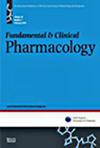Risk Factors and Multiple Interaction Effects for Hyperammonemia in Patients Receiving Valproic Acid
Abstract
Background
Valproic acid (VPA) use is associated with an increased risk of hyperammonemia (HA); however, the specific interactions between HA risk factors in VPA-treated patients remain unclear.
Objectives
This study aimed to identify and assess the effects of multiple interactions between different risk factors affecting HA to improve clinical risk stratification in patients undergoing VPA therapy.
Methods
We conducted a retrospective cohort study by reviewing the medical records of patients treated with VPA at a single center from January 2019 to December 2021. The SHapley Additive exPlanations (SHAP) method was used to interpret model predictions, revealing the relative importance and interactions of factors affecting HA risk. SHAP interaction scores were used to assess the effects of multiple interactions between features, providing a comprehensive analysis of how risk factors interact.
Results
This study identified the Top 15 predictors of HA, ranked by importance: patient age, VPA blood concentration, VPA dose, epilepsy, VPA treatment duration, levetiracetam use, hypertension, mental disorders, and number of medications. Notable multiple interaction effects were observed, particularly between age and factors including VPA concentration, epilepsy, and treatment duration. Younger patients and those with elevated VPA concentrations were at increased risk of developing HA, especially when epilepsy or polypharmacy were present.
Conclusions
This study highlights several critical factors potentially influencing HA development in VPA-treated patients, particularly younger patients, those with epilepsy, or those undergoing polypharmacy. However, as a single-center retrospective study, these findings necessitate further validation through additional research.

 求助内容:
求助内容: 应助结果提醒方式:
应助结果提醒方式:


